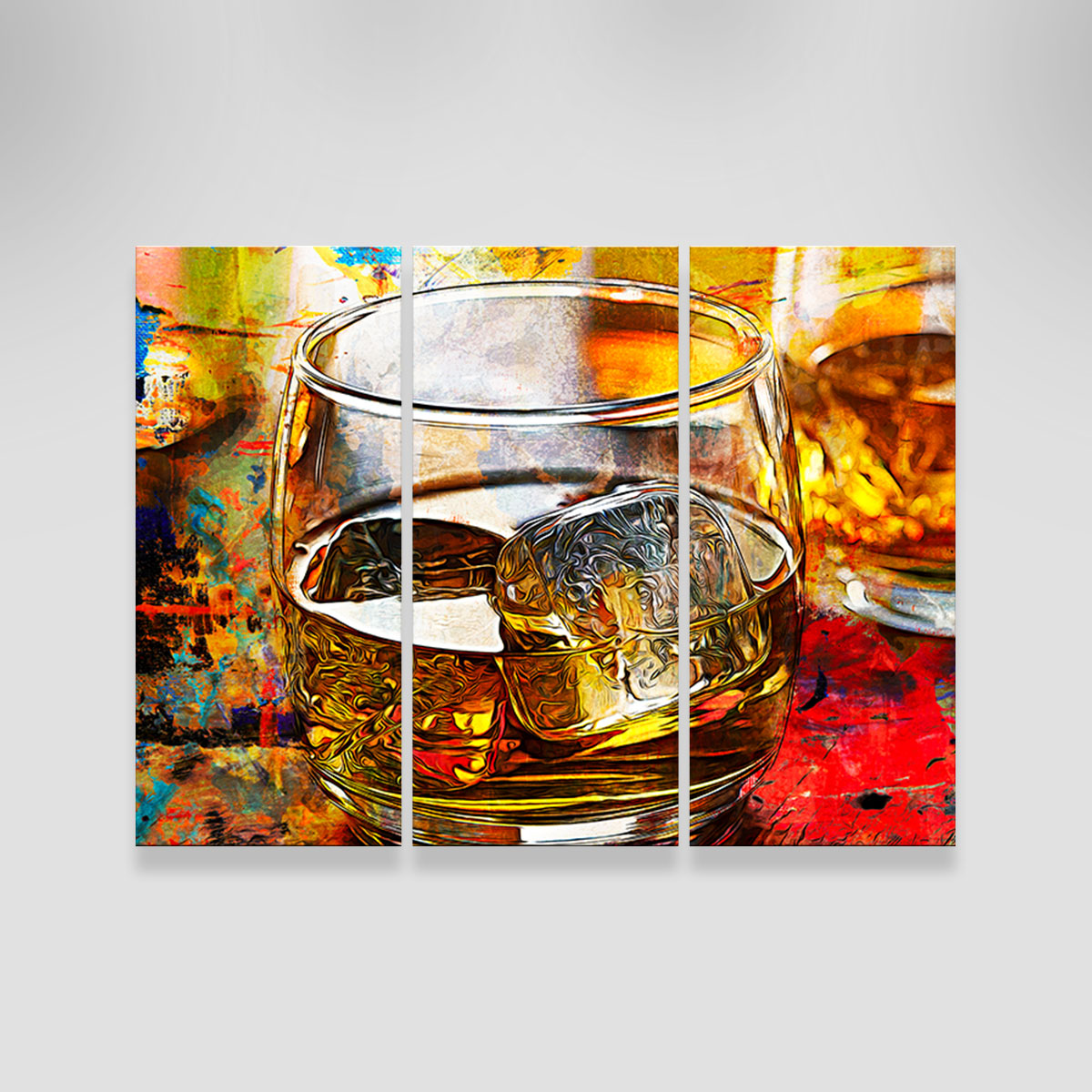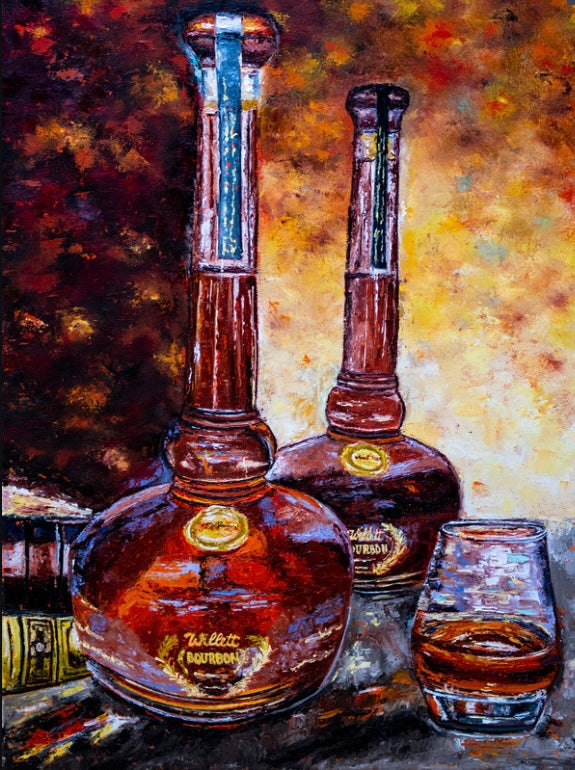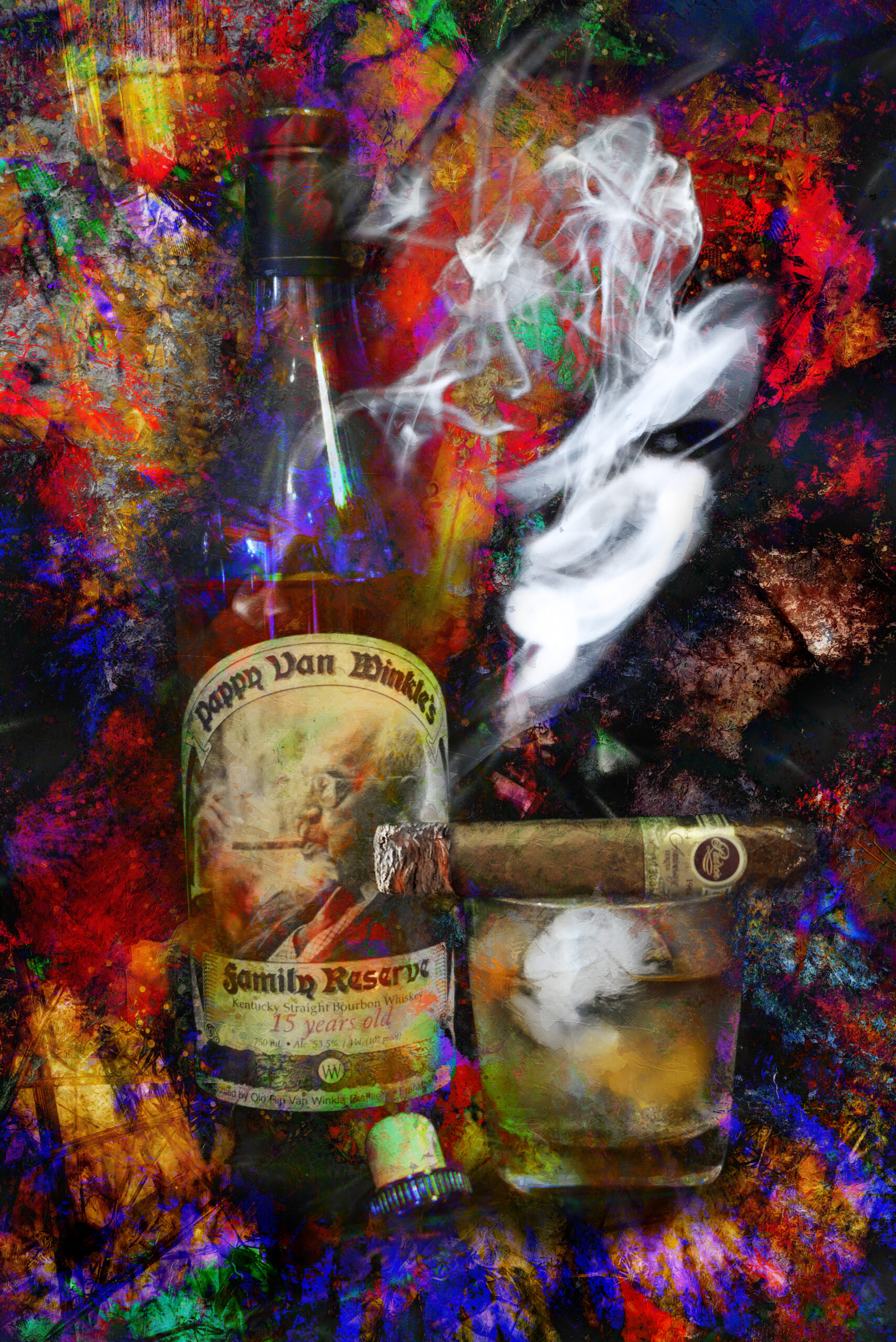The Value of Whiskey Art in Celebrating Heritage and Craftsmanship in the Beverage Sector
The detailed relationship between bourbon art and the party of heritage and craftsmanship within the beverage industry can not be overemphasized. Via thoughtfully created tags and containers, bourbon brand names encapsulate their historical origins and the artisanal skills that define their production techniques. This imaginative dimension not only enhances market allure yet additionally functions as a channel for cultural narration, promoting a deeper link between the craft and the consumer. As we explore the numerous aspects of this topic, fascinating concerns about the influence of modern-day patterns on conventional practices occur, triggering additional assessment.
The Historic Origins of Whiskey
At the heart of whiskey's attraction exists an abundant tapestry of historic origins that trace back to old worlds. The beginnings of whiskey can be connected to the purification techniques of the Sumerians and Babylonians around 2000 BCE, where very early kinds of fermented grain beverages began to arise. It was in the Center Ages that the art of distillation evolved considerably, particularly in Ireland and Scotland, leading to the production of scotch as we understand it today.
The term "scotch" itself stems from the Gaelic word "uisce beatha," indicating "water of life." This expression underscores the social importance of scotch in Celtic cultures, where it was commonly connected with routines, events, and public bonding. By the 15th century, purification became an identified craft within reclusive areas, leading the means for the facility of legal distilleries.
As trade paths expanded, bourbon's popularity expanded, transcending local borders and capturing the passion of aficionados worldwide. Limited Edition. This historic journey mirrors not only the workmanship behind scotch manufacturing however likewise its integral duty in social and cultural contexts, noting it as a considerable drink throughout background
Artistic Expression in Branding
Bourbon branding stands as a compelling crossway of virtuosity and business, where visual identity plays an important function in shaping consumer perception. The aesthetics of scotch labels, packaging, and advertising products mirror not just the brand name's tale however likewise its core worths and heritage. Through creative expression, distilleries share a narrative that resonates with consumers, evoking feelings and triggering connections.
The use of shade, typography, and images in branding offers to differentiate products in a saturated market. Standard motifs may stimulate a sense of authenticity and workmanship, while modern-day styles can symbolize technology and forward-thinking. This strategic imaginative direction enhances brand recognition and loyalty, enabling customers to build an individual relationship with the scotch they select.
Moreover, creative expression in branding often functions as a celebration of local heritage. Distilleries regularly incorporate neighborhood icons or historical recommendations right into their designs, producing a feeling of place that invites consumers to take part in a broader cultural experience. Eventually, the artistry behind whiskey branding not just improves visual charm yet additionally improves the total story of the brand, fostering a deeper admiration for the craftsmanship and heritage embedded in each container.
Craftsmanship in Bottle Style
The virtuosity apparent in whiskey branding expands past visual identification to include the workmanship entailed in container design. Each bottle acts as a vessel not just for the spirit within, but likewise for the story it outlines its origin, high quality, and practice. The design procedure calls for precise interest to detail, as elements such as material, closure, and shape contribute considerably to the general perception of the whiskey.
Workmanship in container style includes selecting high-quality glass that can enhance the bourbon's shade and clearness, while likewise providing a responsive experience for the customer. The silhouette of the bottle have to be both useful and aesthetically attractive, often mirroring the heritage of the brand. Several distilleries decide for unique forms or embossed logos that stimulate a sense of credibility and background.
Furthermore, the tag style and typography play an important function in interacting the brand name's story. Whiskey Art. A well-crafted container not only captivates the customer's eye but additionally reinforces the brand name's dedication to high quality and tradition. In this means, the craftsmanship of container design comes to be an important facet of the scotch experience, combining artistry with an extensive respect for heritage
Social Importance of Bourbon Art
Celebrating custom and workmanship, the cultural value of whiskey art goes beyond mere aesthetics, intertwining with the historic and social stories of the regions where it stems. Each bottle functions as a canvas, depicting the distinct tales, mythology, and customs that have actually shaped regional whiskey-making techniques. The intricate styles usually reflect the heritage of the distillers, integrating find here symbols and themes that reverberate with the society and values of their communities.

Furthermore, scotch art plays a vital function in public events and parties, serving as a substantial link in between people and their shared experiences. By appreciating the virtuosity in whiskey product packaging, customers cultivate a much deeper understanding and regard for the craft, eventually enhancing their enjoyment of the beverage itself.
Modern Trends in Bourbon Presentation
In recent years, the discussion of bourbon has progressed to mirror contemporary tastes and fads while still recognizing conventional workmanship - Bourbon Art. Distilleries are progressively concentrating on visual elements that enhance the general alcohol consumption experience, bridging the gap between heritage and modernity
Ingenious container layouts have emerged, typically including lasting products and artistic her latest blog labels that tell compelling stories. Lots of brand names currently team up with local artists, infusing their products with distinct visual expressions that resonate with consumers. Furthermore, limited-edition launches are usually packaged in collectible containers, including value and charm for aficionados.

Conclusion
In final thought, bourbon art serves as an important channel for sharing the heritage and craftsmanship intrinsic in the drink sector. Via intricate branding, ingenious container designs, and culturally significant imaginative elements, whiskey brands efficiently honor their customs and get in touch with customers. This artistic story not only raises the admiration of bourbon yet also reinforces community identity and pride among manufacturers. Ultimately, whiskey art plays an important role in preserving and celebrating the rich cultural tapestry of whiskey-making.


Workmanship in bottle design entails choosing top notch glass that can improve the whiskey's shade and quality, while likewise offering a responsive experience for the customer. In this method, the craftsmanship of container style becomes an essential facet of the scotch experience, merging virtuosity with a profound regard for heritage.
In final thought, scotch art offers as a vital conduit for expressing the heritage and workmanship integral in the drink market.